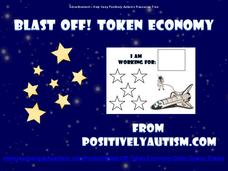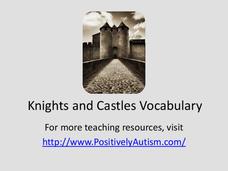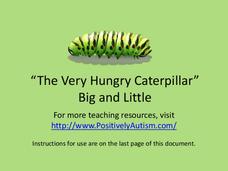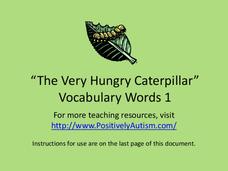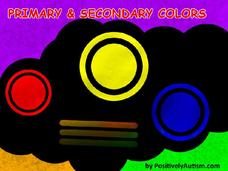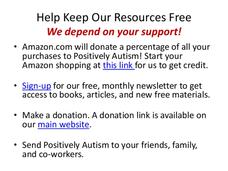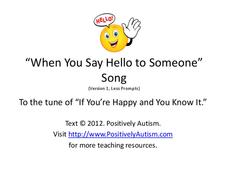Positively Autism
"When I Can Scream" Social Skill Story
Sometimes it is okay to scream and sometimes it is not. This 18-slide presentation shows kids when to use a loud, outside voice and when to use a quiet inside voice. Customized this social skills story by inserting the child's name...
Positively Autism
"When I Feel Angry" Social Skill Story
Here's a presentation that shows kids appropriate ways to behave when they are feeling angry. They learn how to identify when they are feeling angry, calming strategies they can use, and words they can use to express their anger. The...
Positively Autism
Activities for "Decreasing Supermarket Tantrums"
Priming and shaping, two teaching strategies used to prepare kids for upcoming activities, are detailed in this resource that models how to prepare kids for a trip to the supermarket. Activities include creating a shopping list,...
Positively Autism
Knights and Castles Boy/Girl Sort
Learners with autism examine a series of cards with drawings and photographs of knights and ladies, and then sort the images onto printed pages labeled "boys" and "girls." All the figures are dressed in courtly attire.
Positively Autism
Knights and Castles Vocabulary
Are your learners fascinated by dragons, knights, ladies? Capture their their interest with words associated with knights and castles. Each page features one image and the vocabulary printed in large type.
Positively Autism
The Very Hungry Caterpillar Big and Little Activity
A big caterpillar, a little caterpillar. A big butterfly, a little butterfly. Images from Eric Carle's The Very Hungry Caterpillar model for learners with autism the difference between big and little.
Positively Autism
The Very Hungry Caterpillar Vocabulary
Moon, eggs, leaf, sun, caterpillar. Prior to reading Eric Carle's classic tale, introduce vocabulary for The Very Hungry Caterpillar with these picture cards that also include the vocabulary word printed in large type.
Positively Autism
Color Clips
R-E-D spells red. Kids manipulate squares of color and match a lettered, color square with the same letter printed on a clothespin.
Positively Autism
Behavior Traffic Light
The behavior traffic light, a reward system designed to motivate children to control their own behavior, focuses on rewarding kids for behaving appropriately. Behaviors "in the green" earn rewards and privileges, while...
Positively Autism
Primary and Secondary Colors
Red, yellow, blue. Orange, purple, green. Introduce kids to primary and secondary colors with a series of videos and a 19-slide presentation that shows how mixing primary colors produces secondary colors.
Positively Autism
Primary and Secondary Color Worksheets
Here's a worksheet formulated for fun. Kids add two primary colors to produce a secondary color and record the results on train-themed worksheet.
Positively Autism
"When Mom is on the Phone" Social Skills Story
How should youngsters act when their parents are on the phone? Using the story slides in this resource, your learners will discover the importance of not interrupting a parent's phone call and how to whisper or play with toys quietly.
Positively Autism
"Share the Road" Folder/Shoebox Games
Introduce the importance of sharing and taking turns with your learners through a hands-on learning experience involving toy cars! Here you'll find activity instructions and printables to support your "Share the Road" collaborative...
Positively Autism
"Saying "Hello" to People" Social Skills Story
Support learners who may be very shy or reserved in saying "hello" to new people with this set of story slides. The presentation begins with a few slides describing why it is good to greet others, and concludes with opportunities to...
Positively Autism
"Other People Can Be First" Social Skills Story
Remind learners that sometimes other people might like to be first to answer questions, drink from the water fountain, get to the classroom, and other common daily events. This resource includes nine story slides of visuals and simple...
Positively Autism
"Saying 'No, Thank You'" Social Skills Story
Teach learners to use polite words when they do not want something, rather than being rude or aggressive, using these simple presentation slides. The presentation walks students step by step through what it means to say "No,...
Positively Autism
Song: Eye Contact When Greeting
When you say hello to someone, look at their eyes! Set to the tune of "When You're Happy and You Know It," this activity helps learners on the autism spectrum build a valuable social and conversational skill.
Positively Autism
Please Wait to Ask Questions
Learning to wait, though difficult, is an important social skill. Here are two cards that will help kids learn when it is okay to ask questions and when they must wait.
Positively Autism
"The Napping House" Big and Little
The dog is big. The mouse is little. Using vocabulary words introduced in the previous lesson, kids read, or are read, sentences and examine images that contrast big and little.
Positively Autism
"The Napping House" Sleep Items Vocabulary
Bed, blanket, pillows, sleep. Five words associated with Audrey Wood's The Napping House, are introduced in this presentation, which features one word and one illustration printed on each blue page.
Positively Autism
"The Napping House" Vocabulary
House, sleeping, bed, granny, child, dog, cat, mouse, flea. Introduce these vocabulary words before a reading of The Napping House.
Positively Autism
"The Napping House" Ways to Say Sleeping
Sleeping, dozing, snoozing. Five different ways to say sleeping are introduced in this presentation designed to preparing kids for a reading of The Napping House.
Positively Autism
Fine Motor Skills for the Home or Classroom
Put coins in a piggy bank. Thread a shoelace through straws. Take a nut off and place it back on a bolt. Help kids develop their fine motor skills with this series of activities.
Positively Autism
Handwashing Task Analysis Data Sheet
Turn on water, put hands in the water, pump soap. Keep track of a learners' steps to independence with a handwashing task analysis sheet that lists nine observable behaviors that can be rated.


